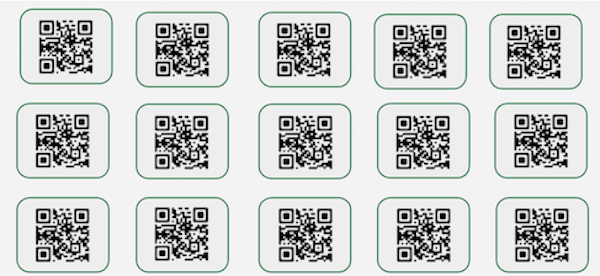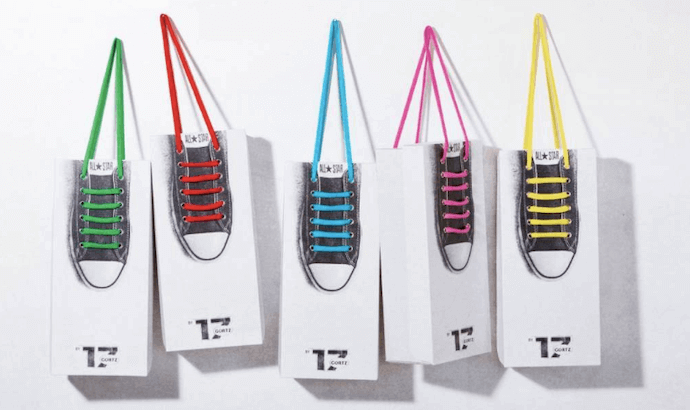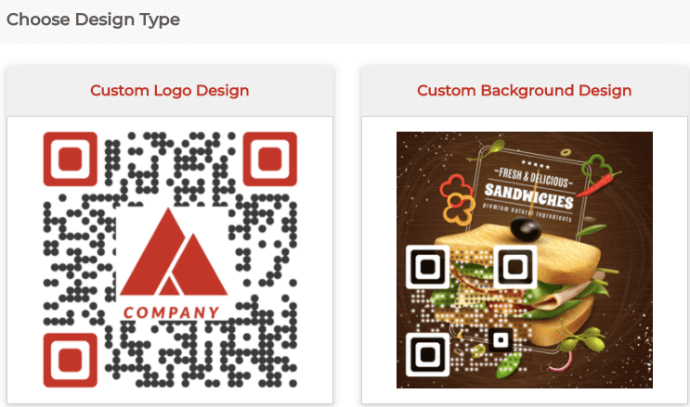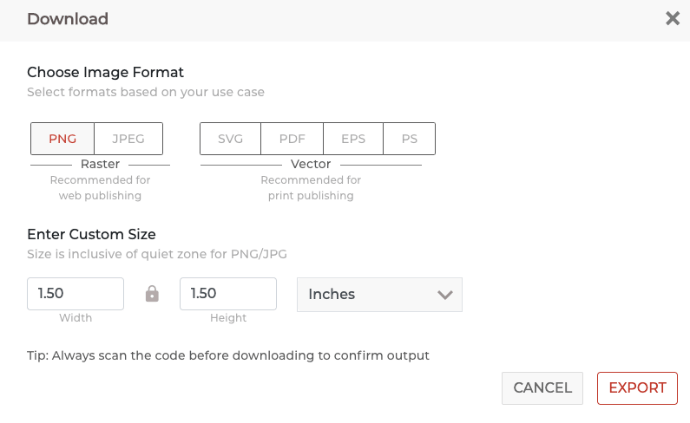You all know what QR Codes are—advanced barcodes that are easily scannable using a smartphone.
For the uninitiated, QR Codes are of two types—Static and Dynamic. Static QR Codes are basic QR Codes while Dynamic QR Codes have more functionality.
The two QR Codes are very different from each other. And are used for different use cases.
And in this article, we will discuss Static QR Codes in detail.
Also read: All About QR Codes
A. What are static QR Codes?
If the QR Code itself stores the target content, then it is a Static QR Code. The content could be a serial code, text message, URL, Wi-Fi password, or contact details.
A Static QR Code has the following characteristics:
1. Static QR Codes are permanent
The content stored in a Static QR Code is permanent. That is, once the content is encoded, it cannot be edited or updated.
Upon scanning, Static QR Codes will show the same content always.
2. Static QR Codes are non-trackable
Unlike a Dynamic QR Code, a Static code is an independent entity. It is not tied to any service. But, if you encode a URL in a Static QR Code, you can then track this URL via Google Analytics using UTM parameters.
Plus, in general, a QR Code can store 7,089 characters. The more data you add, the denser the QR Code will become.
For example, a Static Business Card QR Code can be encoded with contact details such as:
- Name
- Title
- Phone number
- Fax
- Company name
- Website
- Address
Since the information is directly encoded in a QR Code, the QR Code will become dense.
Learn everything about the types of QR Code here
B. What content can you store in a Static QR Code
A Static QR Code can store the following content:
- URL: Leads the user to a web page
- Text: Display simple text such as message, promo code, or serial code
- Contact Details: Displays contact information and allows users to save you as a contact
- Wifi Credentials: Android devices can access Wifi network. iOS devices can view network name and password
- Maps location: Shows location on Google Maps
- Calendar Event: Prompts user to save an event (with details) to their phone calendar
- Phone number: Prompts user to dial the number
- Email Address: Open mail application with your email in the recipient field
- Bitcoin Address: Displays your Bitcoin wallet address
- PayPal Payment: Redirects to a PayPal page that prompts the user to send you a payment
You can either encode content directly, or link Static QR Codes to a webpage.
You can also create static QR Codes in bulk. To do that you can use QR Batch. If you want to automate custom-designed static QR Code generation in your own mobile app or information system, you can use QR API.
Types of static QR Codes
Static QR Codes are those that contain fixed information and do not change over time. They are widely used for various purposes such as linking to a website, providing contact information, or facilitating payments.
Here are some common types of static QR Codes:
1. URL QR Codes
These QR Codes contain a web address (URL) and, when scanned, direct users to a specific website. They are commonly used for marketing purposes to quickly lead customers to a particular webpage.
2. Contact QR Codes (vCard)
These QR Codes store contact information, such as a person’s name, phone number, email address, and other details. When scanned, the information can be saved directly to the user’s phone contacts.
3. WiFi QR Codes
These QR Codes contain information about a Wi-Fi network, including the network name (SSID) and password. Scanning the code allows users to easily connect to the specified Wi-Fi network.
4. Email QR Codes
These QR Codes encode an email address and, when scanned, open the user’s email application with a pre-filled recipient address. This is useful for quick communication.
5. Text QR Codes
Simple QR Codes that encode plain text. When scanned, the encoded text is displayed on the user’s device.
6. Location QR Codes (Geolocation)
These QR Codes contain geographical coordinates (latitude and longitude) and, when scanned, open a map application to show the specified location.
7. SMS QR Codes
These QR Codes encode a predefined text message and recipient phone number. When scanned, the user’s messaging app is opened with the pre-filled message and recipient information.
8. Event QR Codes
These QR Codes contain information about an event, such as the date, time, and location. When scanned, the details can be added to the user’s calendar.
9. Payment QR Codes
QR Codes are widely used for facilitating payments. Payment providers like PayPal, Venmo, and various mobile payment systems use QR Codes to transfer payment information securely.
10. App Store QR Codes
These QR Codes link directly to an app in the respective app store (e.g., Apple App Store or Google Play Store), making it easy for users to download and install the app.
C. Advantages of using static QR Codes
Here is why you can use static QR Codes:
1. Good internet connection not a prerequisite
Since Static QR Codes can encode information directly, they necessarily may not contain web content.
Thus for Static QR Codes such as serial Code QR Code and text message, you do not require internet connections (Wifi or mobile data) to access the information encoded. You just need to scan the QR Code via your smartphone and see the content.
2. You can create static QR Codes in bulk

Say you need more than hundred QR Codes for your use case. You cannot create QR Codes one-by-one. It will consume a lot of your time and effort.
With a professional bulk QR Code generator tool such as QR Batch, you can create thousands of Static QR Codes easily.
Generate a QR Code For Your Unique Case
START TODAY!3. Add design to your QR Code
Just like Dynamic QR Codes, you can customize Static QR Code too. You can add your company’s logo, change the background color and image, change the pattern of data modules and eyes, amongst others.
In other words, you can easily convert Static QR Codes in a piece of artwork.
D. Types of static QR Code
Static QR Codes are QR Codes that contain fixed information and do not change over time. They are commonly used for various purposes, such as sharing contact information, website URLs, Wi-Fi network credentials, and more.
Here are some common types of static QR Codes:
1. Website URL QR Code
These QR Codes contain a web address and, when scanned, open a specific website in the user’s mobile browser.
2. vCard QR Code
vCard QR Codes store contact information like a person’s name, phone number, email address, and more. Scanning this QR Code can save the contact information directly to the user’s address book.
3. Text QR Code
These QR Codes contain plain text, which can be a message, note, or any other type of information.
4. WiFi QR Code
WiFi QR Codes store the SSID and password for a wireless network. Scanning this code can help users quickly connect to the specified Wi-Fi network.
5. Google maps QR Code
These QR Codes provide a link to a specific location on Google Maps. When scanned, it opens the map with directions to the designated location.
6. Email QR Code
These QR Codes contain an email address and an optional subject line and message. Scanning the code opens the user’s email client with a new email addressed to the specified email address.
7. App download QR Code
These QR Codes direct users to download and install a specific mobile app from the App Store or Google Play Store.
8. File download QR Code
Used to share files, these QR Codes provide a direct link to download a file, such as a PDF, document, or image.
9. Social media QR Code
These QR Codes link to a specific social media profile, allowing users to follow, like, or connect with the associated account.
10. Custom QR Code
These are QR Codes that can contain a combination of the above types of information or custom data. Businesses often use custom QR Codes for branding and marketing purposes.
E. Where can you use static QR Codes

From general to promotional purposes— Static QR Code can be used everywhere. And since you can create Static QR Code in bulk easily, here are some use cases:
1. For management and engagement
You can use QR Codes in the following use cases:
a. Inventory Management
You can create Static QR Code to manage your inventory efficiently. You can create and paste the QR Code on every product.
b. Product Packaging

You can create a Static QR Code to provide detailed information about your product. For example, if you are a food and beverage company, you can use Static QR Code to provide information about GMO ingredients.
c. Product Catalogue
You can use Static QR Code in your product catalogue to provide more information or interesting facts. This way you can engage your customers better.
d. Event Management
You can use Static QR Code in bulk to manage your events better. For example, if its a large scale event, you can put the QR Code on various spots containing the event schedule.
You can also create QR Code based delegate cards. And store the delegate’s contact details. This will be in networking better— exhibitors/delegates can efficiently network with the attendees.
2. For business and marketing
Here is how you can use Static QR Code for your business:
a. For your business Card
You can create VCard Static QR Code and encode your contact details. Upon scanning, the end users will directly be able to save you as a contact in their phonebook. That is, all the manual work in saving a contact will be eliminated.
This will help you build your network more efficiently
b. For your employee identity card
You can create Static QR Codes in bulk for your employees. Similar to QR Code based business card, you can store contact details (such as name, employee code, designation).
Upon scanning via a smartphone, the details of the respective employee will appear. This will ensure authentic entries in your workspace.
Besides, you can also use Static QR Codes on a gift card, in games and entertainment (Scavenger Hunt), and a number of other areas.
c. Present additional work
Similarly, you can also use static QR Codes to manage projects or to showcase your unique work such as mobile apps, project documents, designs, or articles
But make sure you add a suitable caption with the QR Code image. It will help explain to the audience what the QR Code links to.
For example, say you are a content writer and have added one of your articles to the QR Code. A simple help note such as ‘Scan to read my article’ will help the end-users know what action to take.
Similarly, if you are a creative professional such as a graphic designer, you can link your artworks to QR Codes.
F. How to create static QR Code
In order to create QR Codes, you need a best QR Code generator tool or a bulk QR Code generator to create QR Codes in bulk.
Using Scanova for demo purposes, here are some steps that you need to follow:
1. Go to Scanova QR Code Generator and login
You can find the subscription details on this page.
2. Choose the category of QR Codes that suit your purpose best.
Note that the following QR Code types can only be Dynamic:
- App Store QR Code: Single QR Code for all app store links (iPhone, iPad, Android, etc.) of a mobile app
- Social Media QR Code: Single QR Code leading to a page with links to all your social media pages
- Dynamic Business Card QR Code: QR Code leading to a personal web page with all your contact details
- Coupon QR Code: QR Code leading to a customizable coupon for your brand promotions
For demo purposes, we will be using Website URL QR Code
How to create Static Website URL QR Code
3. Select the category of Website URL QR Code

4. On the page that loads, you can encode the URL you want to encode and click Continue
5. Once done, you will be asked to specify the name of the QR Code and click on the category of Static.
6. Now, click Create a QR Code
7. On the page that loads, you will have two design options to choose from:

- Custom logo design: It allows you to add a logo and colors to it
- Custom background design: It helps you add a background image to the QR Code
If your use case is marketing or promotional, it is recommended that you add design to your QR Code.
Customized QR Codes attract 50-200% more scans.
Related : How To Make QR Code For App Links: Everything You Need To Know
8. Once decided on the design, click on Done Editing followed by downloading the Code
9. A window will open prompting you to specify the QR Code size and format. Once done, click on Export

Your Static QR Code will be created. Note that once generated, you can use it for as long as you want. No need to worry about renewing your subscription.
G. Best practices: Static QR Code
Static QR Codes are commonly used for a variety of purposes, including sharing URLs, making payments, and providing contact information.
To ensure the effectiveness and security of static QR Codes, it is essential to follow best practices. Here are some recommendations:
1. Use high-quality QR Codes
Generate QR Codes using reliable QR Code generators that produce high-resolution images. This ensures that the QR Code is easily scannable and readable by various devices and applications.
2. Test scannability
Before deploying the QR Code, test it across different devices and applications to ensure that it can be easily scanned and decoded. Consider testing it on various smartphones and QR Code scanning apps to verify its functionality.
3. Choose appropriate size and placement
Make sure the QR Code is of an appropriate size for the context in which it will be used. Ensure that it is not too small to be easily scanned or too large to fit the medium. Also, place it in a location where it is easily visible and accessible to the target audience.
4. Provide clear call to action
Accompany the QR Code with a clear call to action that guides users on what to expect after scanning the QR Code. This can include instructions such as “Scan to visit our website” or “Scan to make a payment.”
5. Secure the destination URL
Ensure that the destination URL is secure and free from any potential security threats. Use HTTPS to encrypt data transmitted between the user and the website to protect sensitive information.
6. Regularly check for validity
Regularly check if the destination URL is valid and functional. Websites or landing pages may change over time, and it is crucial to update the QR Code if the linked content is modified or removed.
7. Consider branding
If the QR Code is being used for marketing purposes, consider incorporating branding elements such as logos or colors to make it more visually appealing and recognizable.
8. Educate users
Provide brief instructions or information on how to scan the QR Code for users who may not be familiar with the technology. This can help increase the adoption rate and improve the user experience.
9. Monitor and track usage
Utilize tracking tools to monitor and track the usage of the QR Code. This can provide valuable insights into user engagement and help in evaluating the effectiveness of the QR Code campaign.
10. Update with caution
If there’s a need to update the QR Code, do it with caution, especially if it has already been widely distributed. Consider the implications of changing the destination URL and communicate the update clearly to users.
H. FAQs: Static QR Code
1. What is a static QR Code?
A static QR Code is a two-dimensional barcode that contains fixed data and doesn’t change over time. It typically links to a single destination, such as a website URL, contact information, or payment information.
2. How is a static QR Code different from a dynamic QR Code?
A static QR Code contains fixed information that doesn’t change, while a dynamic QR Code can be edited or updated with new information, making it more versatile for applications like inventory management and event ticketing.
3. What are the common uses of static QR Codes?
Static QR Codes are commonly used for purposes like sharing website URLs, displaying contact information (vCards), providing Wi-Fi network credentials, and making payments through platforms like PayPal or cryptocurrencies.
4. How can I create a static QR Code?
You can create a static QR Code using Scanova’s QR Code Generator.
5. Are there any size or resolution requirements for static QR Codes?
While there are no strict size requirements, it’s essential to ensure that static QR Codes are large enough to be easily scanned. High-resolution images are recommended for better readability.
6. What information can I store in a static QR Code?
You can store various types of information in a static QR Code, including website URLs, plain text, contact details (vCard), email addresses, phone numbers, geographic coordinates, and more.
7. Is it possible to secure the data in a static QR Code?
The security of a static QR Code depends on the data it contains. For sensitive information, like payment details, it’s crucial to use secure connections (HTTPS) and ensure that the destination is trustworthy.
8. Can I track user interactions with a static QR Code?
Tracking user interactions with static QR Codes is more challenging compared to dynamic QR Codes. You can use web analytics to monitor visits to the linked URL but won’t get detailed insights as with dynamic QR Codes.
9. How do I update or change the information in a static QR Code?
To update a static QR Code, you would need to create a new QR Code with the revised information and distribute it in place of the old one. It’s important to manage the transition carefully, especially if the Code is widely distributed.
10. Are there any best practices for using static QR Codes effectively?
Yes, best practices for static QR Codes include ensuring scannability, providing clear instructions, securing the destination URL, monitoring and testing, and educating users on how to scan the Code, among others.
11. Can I use static QR Codes for marketing and branding purposes?
Yes, you can incorporate branding elements into your static QR Codes, such as logos and colors, to make them visually appealing and align them with your marketing campaigns.
Summing Up
In today’s blog, we’ve explored the world of static QR Codes and their incredible versatility. These unchanging digital codes have a wide range of applications across different industries, from marketing to everyday convenience.
If you’re still reading, you’ve already learned everything about static QR Code. If you have any questions, let us know in the comments.
